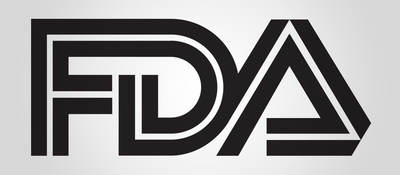December 13, 2023
By Julee Henry and Katelynn Larson
Medical device risk classification overview
When preparing a medical device for market clearance, considering the risk-based classification of medical devices can be key to a successful regulatory submission. Below, we explore the differences (and similarities) of medical device classification in the US and European Union (EU) and the human factors engineering (HFE) expectations for different device classifications in each region.
How does the FDA classify medical devices?
The US Food and Drug Administration (FDA) classifies medical devices according to risk with levels I, II, or III depending on the risk to the patient or user. Device risk levels are typically determined by searching the FDA’s device classification database to find products that are “Substantially Equivalent.” In summary, devices are categorized into the risk-based classifications defined below.
The FDA’s risk classification of medical devices
-
Class I medical devices are considered low-risk, often with simple designs without moving parts. Examples of this device risk class include adhesive bandages, scalpels and manual stethoscopes.
-
Class II medical devices are medium-risk, often with more complex designs but whose failure would be unlikely to pose an immediate risk of serious injury or death. Examples include endoscopes, powered wheelchairs, syringes, and total joint implants. The highest percentage of medical devices (43%) are Class II.
-
Class III medical devices are defined by the FDA as high-risk, often implanted and used to sustain life, and could lead to serious medical complications, including death, if they fail. Examples include cardiac pacemakers, deep-brain stimulators, breast implants and heart valves.
How does the EU classify medical devices?
There are 22 rules in Annex VIII of the European Medical Devices Regulation (MDR) used to determine the medical device risk classification in the EU. Devices can be described as falling into one of four categories separate from their risk-based class:
-
Non-invasive medical devices
-
Invasive medical devices
-
Active medical devices
-
Special rules (including contraceptive, disinfectant and radiological diagnostic medical devices).
In summary, medical devices in the EU are further classified into the risk-based classes defined below.
The EU’s risk-based classification of medical devices
-
Class I devices are considered low- or medium-risk depending on whether the device is provided sterile, has a measuring feature or is a reusable surgical instrument. Examples of this device class might include stethoscopes, thermometers or endoscopes.
-
Class IIa devices are considered medium-risk. Examples of this device class might include hearing aids or ultrasound equipment.
-
Class IIb devices are considered medium/high-risk. Examples of this device class might include infusion pumps, ventilators or intensive care monitoring equipment.
-
Class III devices are considered high-risk. Examples of this device class might include cardiac pacemakers, deep-brain stimulators, breast implants and heart valves.
Impact of medical device risk classification on the FDA and EU’s human factors expectations
FDA and European regulations do not exclude manufacturers from needing to implement a human factors engineering process for certain risk-based classes of medical devices. However, in the US, most Class I devices are registered with the FDA without the requirement to obtain clearance; therefore, HFE documentation is not necessarily required for a premarket submission.
In the US and EU, instead of referring to the medical device risk classification alone, manufacturers should evaluate the use-related risk and scale their HFE efforts for all medical devices, depending on the use-related risk analysis (URRA). That said, the number of use-related risks is impacted by the device’s complexity and risk level. For example: while misuse of either could result in injury or death, a scalpel might only have 1-2 use steps and a few potential use errors whereas a dialysis machine could have tens of use steps and hundreds of potential errors. Consequently, the human factors engineering efforts to demonstrate safe use for the scalpel will be much less than for the dialysis machine.
The FDA published guidance in December 2022 describing what human factors documentation should be included in marketing submissions, depending on the device’s HF submission category. The HF submission category is determined by answering a series of questions about whether the device is new or modified, the changes to a product’s user interface, intended users, or use environments, and changes to critical tasks based on the URRA. Notably, these HF submission categories (1, 2 and 3) are unrelated to FDA’s medical risk device classification system (I, II and III). However, Emergo by UL understands the importance of and how to apply the FDA’s new human factors guidance for medical device submissions.
Similarly, in Europe, medical device manufacturers are expected to scale their human factors engineering efforts depending on decision factors like those outlined by the FDA. However, the IEC 62366-1 guidance is not as explicit as the FDA’s guidance on detailing exactly what usability documentation is required.
Julee Henry is lead human factors specialist and Katelynn Larson is technical writer at Emergo by UL.
Request more information from our specialists
Thanks for your interest in our products and services. Let's collect some information so we can connect you with the right person.







